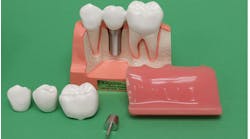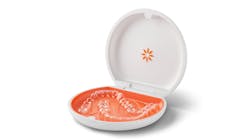It is generally understood that in a periodontally healthy individual there is homeostasis between the body and the microbes. This balance can be perturbed by a variety of factors, including environmental factors such as smoking, diet, and stress. There are also many biological factors that can upset host-microbe homeostasis such as diabetes or a compromised immune system, among others. The disruption in the host-bacterial balance leads to a dysbiotic microbial community. In other words, when something causes a shift in the bacterial population from one associated with periodontal health to one associated with periodontal disease, inflammation ramps up and tissue breakdown commonly follows.
Something else may also be occurring. The periodontal pathogens do not use carbohydrates for their nutrient source as the cariogenic bacteria do. The perio bugs feast on proteins—those that we ingest and our own such as collagen, which is a structural protein. Heme-containing compounds also serve as bacterial food sources. There is a school of thought that the bacteria are inflammophilic; i.e., attracted to inflammation. Why would this be the case? Because the enzymes released when inflammation is mobilized by the bacteria create a nutritionally rich environment.1 Collagenase, for example, is breaking down collagen, laying out a nice buffet of protein bits for the bacteria.
So, chronic inflammation is more than a mechanism of periodontal tissue destruction. It is a source of nutrients exerting considerable influence on the composition and numbers of the periodontal microbiota, favoring species that persist in the presence of inflammation and utilize the tissue breakdown products as a food source.1 It is apparent that bacteria cause inflammation to obtain food, rather than to destroy the periodontium. This is not to say that the bacteria are making a conscious choice, but rather, an evolutionary adaptation. The traditional understanding of bacteria and inflammation indicates that the composition of the oral microbial community is determined by a variety of environmental and biological factors, which then causes the inflammatory response. But we now know that inflammation may determine the composition of the microbiota.2
This should perhaps alter our thinking about periodontal disease on a clinical level. When we see patients with periodontitis, it would be helpful to realize that it may not be a static condition. The bacterial population may indeed be moving toward a predominance of pathogenic species under the influence of the inflammation.
Another way of looking at this is the microbes that are present are the result of the disease instead of the other way around. Furthermore, the idea that inflammation fosters bacterial accumulation is consistent with the finding that anti-inflammatory treatments reduce the bacterial population.
All of this information and these novel concepts emphasize the nonlinear nature of periodontal disease development and progression and the role of the causative bacteria. There are innumerable feedback loops and interconnections and synergies and competitive interactions, protective and destructive capabilities, all acting together in a seemingly chaotic mash-up of host and microbial cells, resulting in health or disease. Our understanding of these interactions is also evolving rapidly. It is no surprise that the expanded knowledge always seems to increase in complexity rather than simplify.
So it appears that the inflamed oral environment creates conditions that are favorable for the development of a dysbiotic microbiome. This isn’t surprising since it is well known that the microenvironment in a periodontal pocket is modified by the microbial inhabitants. Our current understanding indicates that bacteria ignite the immunoinflammatory response, which in turn influences the species composition of the biofilm. Chronic inflammation selects for and stabilizes a disease-provoking community of bacteria.1
Standard mechanical approaches to manage periodontal disease frequently are not fully effective, and refractory disease is common. Reducing the bacterial burden is certainly important, but other adjunctive agents may enhance favorable outcomes. Anti-inflammatory agents may become part of mainstream therapy in the future as there is adequate evidence that controlling inflammation not only leads to tissue healing, but also diminishes the bacterial population.
References
1. Hajishengallis G. The inflammophilic character of the periodontitis-associated microbiota. Mol Oral Microbiol. 2014;29(6):248-257. doi:10.1111/omi.12065
2. Tanner AC, Kent R, Kanasi E, et al. Clinical characteristics and microbiota of progressing slight chronic periodontitis in adults. J Clin Periodontol. 2007;34(11):917-930. doi:10.1111/j.1600-051X.2007.01126.x







